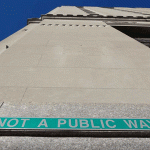March 2019 Employment: Back to the Bottom 3 for Recovery
Rhode Island’s employment situation in March was a story of divergence, both from other states and in terms of the numbers’ significance. The official unemployment rate dropped again, to 3.8%, well below its level prior to the Great Recession. Yet, the state continues to shed jobs and employment.
The following chart illustrates how this could be. The blue line, showing employment, is dipping down, but the change in the red line, showing the total size of the labor force, has been more precipitous. With people stopping their job searches faster than others stop working, fewer people are actually looking for work.
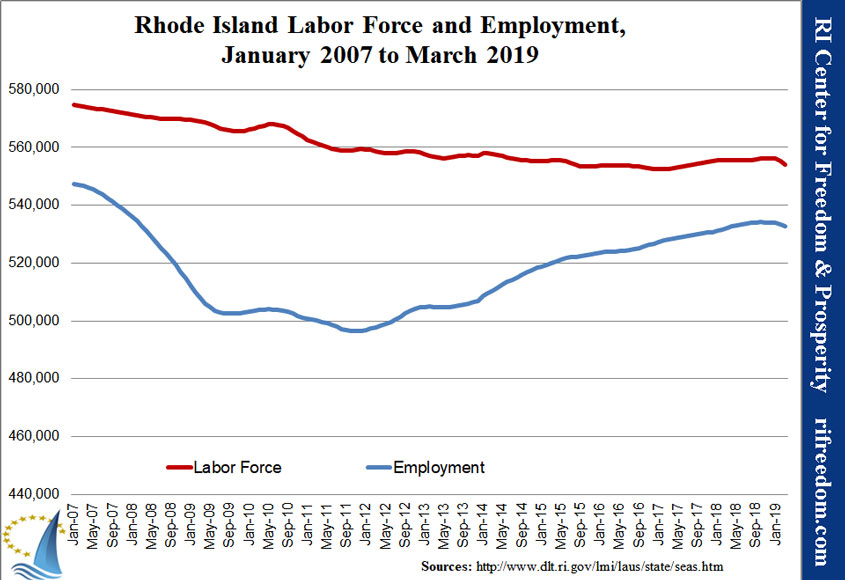
The pair of lines in the next chart looks at the matter in a different way. This time, the blue line represents the official unemployment rate. The red line shows what the rate would have been if nobody had left the labor force since the recession. At this point, the two lines are moving in opposite directions, which will be a very bad sign if it continues. Looking at the red line, the hypothetical unemployment rate would have increased from 7.2% to 7.3% in March.
[box type=”tick” style=”rounded”]Please consider a voluntary, tax-deductible subscription to keep the Current growing and free.[/box]
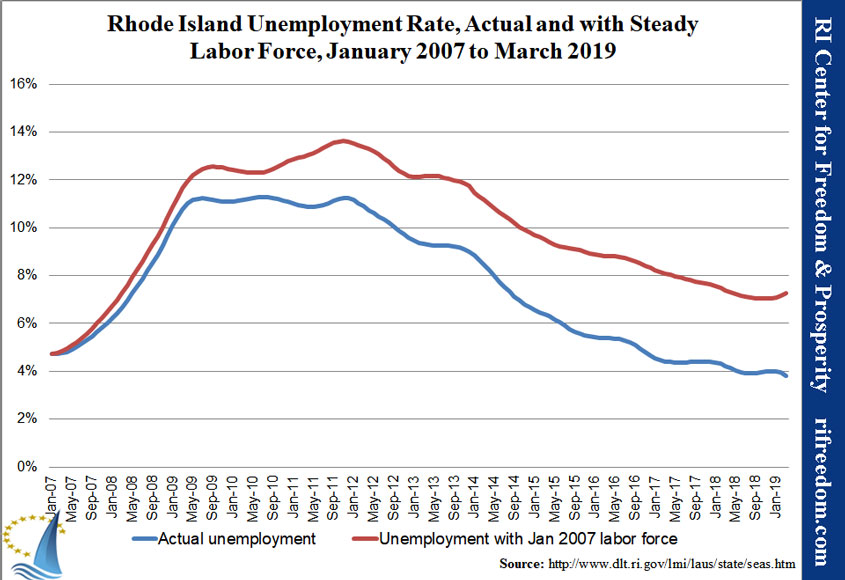
The above chart shows one divergence. Another divergence shows up in the next one. Here, Massachusetts is once again pushing off the chart when it comes to the increase in its labor force since the recession while Rhode Island sinks. If Rhode Island’s trend continues, it won’t be long until there are fewer people in the labor force than there were people actually working in 2007.
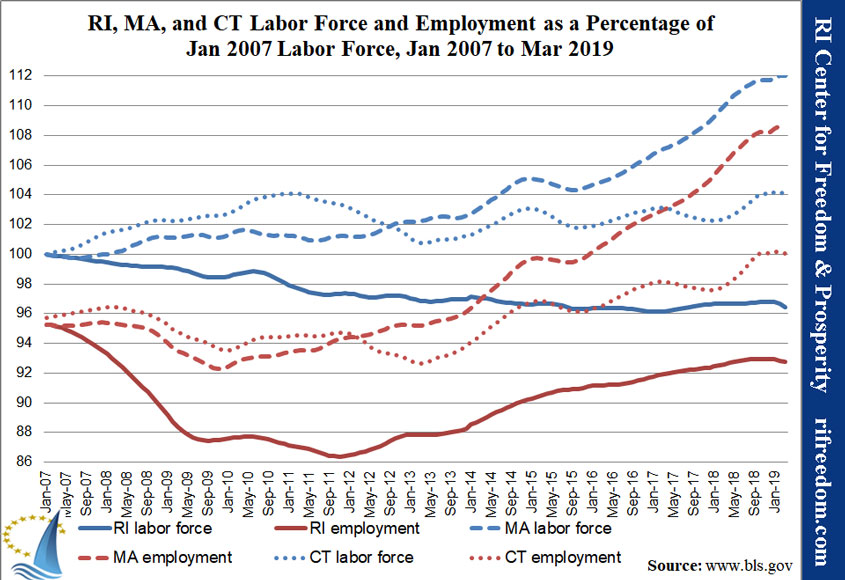
This difference stands out as a highlight from the national perspective, too. Looking at how many employed residents each state has recovered or gained since the recession, Rhode Island is back down in the bottom 3, ahead of only Mississippi and West Virginia. Meanwhile, Massachusetts has entered the top 5, tied with Arizona. Since the recession, employment in Massachusetts has increased 14%.
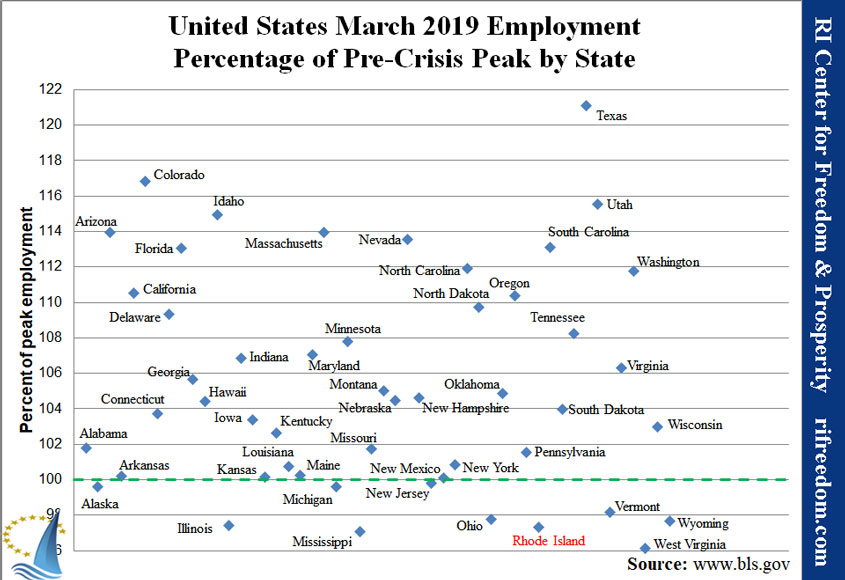
One area in which a divergence might actually be encouraging is the comparison of jobs based in Rhode Island (lighter shading) versus the number of Rhode Islanders who say they are employed (darker shading). The first covers anybody who is a direct employee of somebody else, working in Rhode Island (wherever they may live). The second covers Rhode Islanders who may be working for themselves (including contracting) or have jobs in other states. In both cases, the numbers are headed downward.
With respect to jobs based in the state, there has been basically no increase since July 2017.
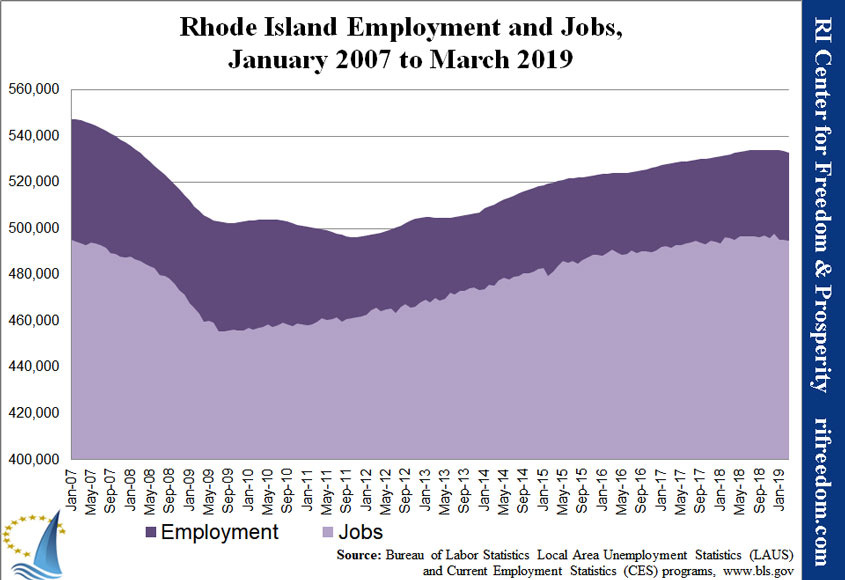
Finally, given the above, it comes as no surprise that Rhode Island is still last among New England states on Rhode Island Center for Freedom & Prosperity’s Jobs & Opportunity Index (JOI). JOI takes into account 12 data points, including these employment and jobs numbers as well as income, taxes, and welfare, and it finds Rhode Island to be 47th in the country.
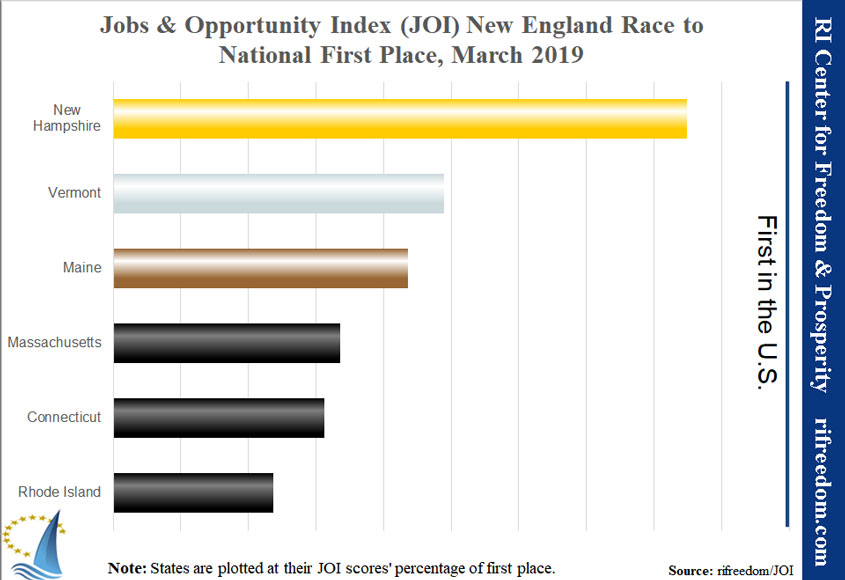
[metaslider id=32396]



